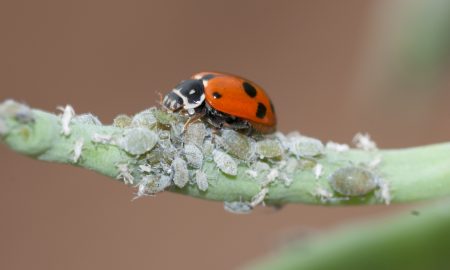Increasing levels of soil moisture, especially in the NSW Riverina, means that growers need to be wary of slugs and proactive when it comes to management.
Where have they been reported?
In the NSW Riverina, slugs have been reported near Howlong within a wheat paddock under-sown with clover, as well in Barooga, attacking emerging canola.
Further north, near Wellington and Parkes (NSW Central West Slopes & Plains), slugs have become a localised problem in paddocks where heavy stubble and black soils near creeks prevail.
In Victoria’s South West, slugs have been found in Derrinallum, a high-risk location for slugs, however, most areas up until now have not required baiting.
About slugs
The main pest species of slugs attacking broad-acre crops are the black keeled slug (Milax gagates) and the grey field slug (Deroceras reticulatum). The brown field slug (Deroceras invadens) can also be a serious pest, with multiple species often co-occurring.
For detailed information about slugs, and for advice on preventative management strategies,go to black keeled slugs and grey field slugs within the PestNote series.
Dr Michael Nash, Research entomologist at SARDI, is in the process of developing a predictor for slug activity in crops with continued support from GRDC. Whilst still preliminary research, he suggests that soil moisture levels at a depth of 500-600 mm could be one predictor. Another may be rainfall of more than 70-80 mm within a 3-week period.
Our advice
Dr Nash advises canola growers in eastern NSW Riverina to be especially proactive with slug baiting this season. For paddocks with a known history of slug occurrence, applying bait at sowing is critical.
Continued monitoring with further baiting may be necessary, especially in canola. Monitoring using tiles in this district is not recommended; instead apply a line of cheap bait and monitor numbers of affected slugs along the bait line.
In areas of slug risk across Victoria, monitoring should continue using bait stations.
Timing for slug baiting should have been undertaken at the time of sowing.
Acknowledgements
Sources of field reports of slugs
David Eksteen – Agricultural consultant, Eksteen Consulting (North East Victoria)
Dr Michael Nash – Research entomologist, SARDI (Adelaide)
Andrew Parr (@AndrewJParr1)
Edward Durham (@edwardncdurham)
IMAG Agronomy (@IMAG_Consulting)
Cover image: Photo by Andrew Weeks, Cesar Australia





